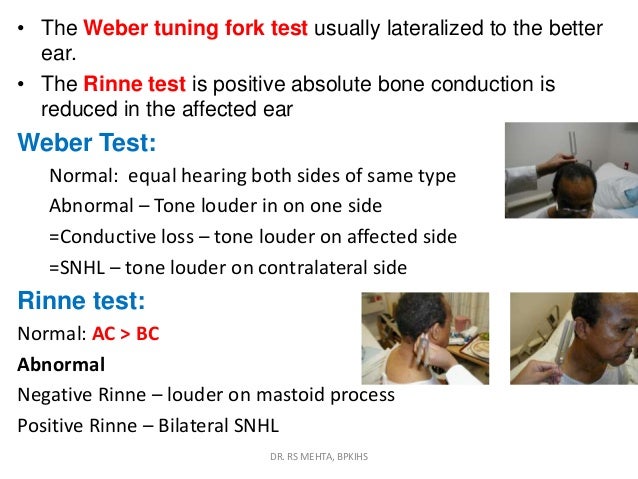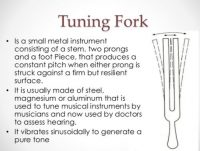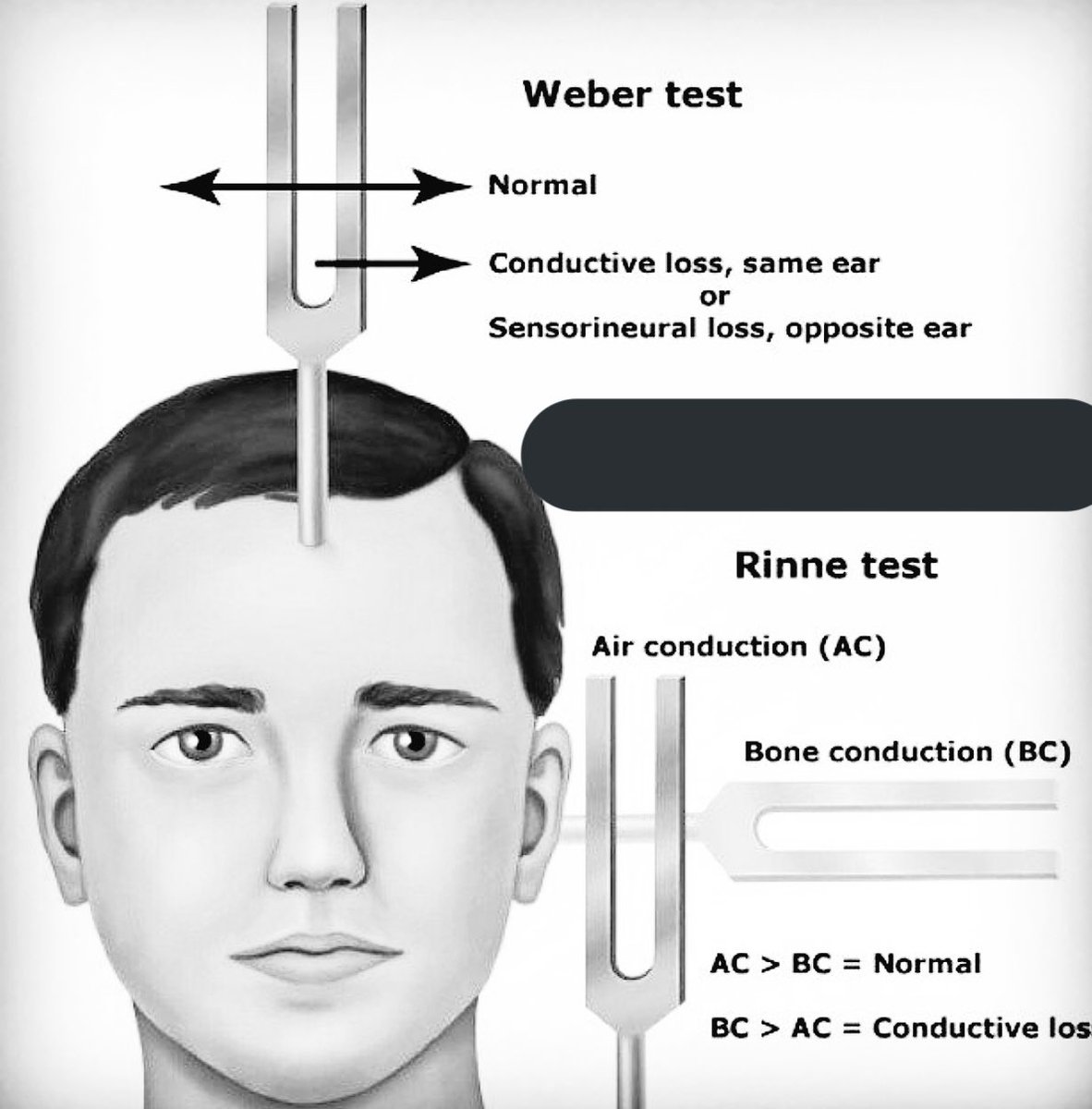


Normal: sound is heard equally in both ears.Weber’s test should be assessed in context with the results of Rinne’s test before any diagnostic assumptions are made: Tap a 512Hz tuning fork and place in the midline of the forehead Ideally, you want a tuning fork that has a long period of decay and cannot be detected by vibration sensation.

However, a patient with significant sensorineural hearing loss may have a ‘false negative’ Rinne’s test, as they are unable to hear anything in the affected ear but bone vibrations may be transmitted to the unaffected ear.Įxplain to the patient that you are going to test their hearing using a tuning fork.ġ. Tap a 512Hz tuning fork and place in the midline of the forehead. The tuning fork should be set in motion by striking it on your knee (not the patient’s knee or a table).Ģ. Ask the patient “Where do you hear the sound?”Ī 512Hz tuning fork is used as it gives the best balance between time of decay and tactile vibration. In this situation, the patient will be able to hear the tuning fork for longer when held on the mastoid (testing bone conduction) than when held over the external auditory meatus (testing air conduction). conductive hearing loss), then bone conduction may be better than air conduction. If there is a problem with air conduction (i.e. Therefore, the patient should be able to hear the tuning fork held over the external auditory meatus (which is testing air conduction) for longer than the tuning fork held on the mastoid (testing bone conduction). In healthy patients, air conduction (using the structures in the ear) should be better than bone conduction (conduction of vibrations via bone). Mask the ear not being tested by rubbing the tragus If they can hear the sound, it suggests air conduction is better than bone conduction, which is what would be expected in a healthy individual (this is often confusingly referred to as a “Rinne’s positive” result). When the patient can no longer hear the sound, move the tuning fork in front of the external auditory meatus to test air conduction.Ĥ. Ask the patient if they can now hear the sound again. Confirm the patient can hear the sound of the tuning fork and then ask them to tell you when they can no longer hear it.ģ. Place a vibrating 512 Hz tuning fork firmly on the mastoid process (apply pressure to the opposite side of the head to make sure the contact is firm).

It is important to be able to interpret the results of Rinne’s and Weber’s, as these tests frequently appear in OSCEs and written examinations.ġ. They are usually performed as part of a comprehensive ear examination. Rinne’s and Weber’s tests are simple tuning fork tests used to screen for the presence of conductive and sensorineural hearing loss.


 0 kommentar(er)
0 kommentar(er)
